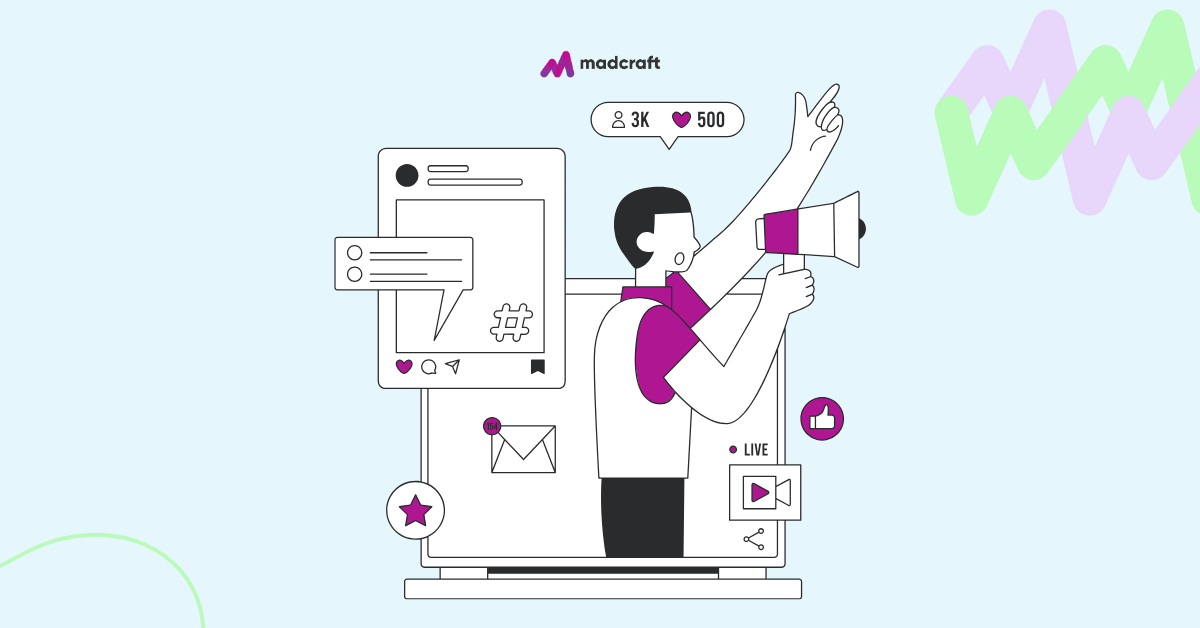Team Madcraft


In a dynamic marketing landscape, relevance is key. Seasonal trendjacking, or leveraging annual events and holidays, enables brands to align their messaging with the public’s interests, boosting visibility and engagement. By tapping into trending events like Christmas, Earth Day, or unique cultural celebrations, brands can build timely, impactful connections with their audiences.
Seasonal trendjacking is the strategic practice of aligning brand content with current events, holidays, or cultural trends. This involves creating targeted campaigns or promotions around significant dates, such as New Year’s or Valentine’s Day, and even niche observances like National Pet Day. By embracing relevant events, brands can engage audiences with messages that feel fresh and timely.
AI significantly streamlines campaign management by automating tasks like bid adjustments, performance monitoring, and A/B testing. This ensures campaigns are optimized in real-time, freeing marketers from manual interventions.
Pro Tip: Employ Google’s Smart Bidding or Facebook’s Dynamic Ads to automate complex decisions and maximize efficiency, allowing you to focus on strategic growth rather than daily management.
AI’s capabilities aren’t limited to targeting; it also improves creative performance by predicting which visuals, headlines, and ad copy will resonate most with your audience. By learning from past performance, AI tools recommend creative elements that drive engagement.
Pro Tip: Use AI-powered creative tools like AdEspresso or Albert to automate the testing and optimization of visual assets. For example, Coca-Cola has utilized AI-driven creative insights to tailor ads for different audience segments, improving engagement rates.
AI can enhance ROI by dynamically allocating budget based on performance metrics and predictive analytics. By forecasting which keywords and campaigns will yield the best results, AI ensures your spending aligns with business goals.
Pro Tip: Implement AI tools to monitor and adjust your budget allocation in real-time. Many brands report up to a 20% improvement in ROI by adopting AI-based budget management techniques.
AI customizes ad experiences by analyzing the customer’s position within the purchase funnel. This ensures prospects see relevant messages at each stage, whether they are just becoming aware of your brand or ready to make a purchase.
Pro Tip: Leverage AI to map the customer journey, and use platforms like Facebook’s suggestive text for more personalized messaging, enhancing engagement and conversions throughout the funnel.
AI simplifies data analysis by automatically generating insights, highlighting trends, and allowing for quicker strategic adjustments. Automated reports streamline decision-making and reveal high-level insights without sifting through endless metrics.
Pro Tip: Tools like GA4 (Google Analytics 4)’s AI-driven insights or Adobe Analytics streamline performance tracking, enabling marketers to prioritize strategy over data-crunching.
While AI offers powerful advantages, it should augment, not replace, human creativity and oversight. Regularly review automated campaigns to ensure they align with your brand’s goals and customer values. Relying solely on automation can lead to overlooked details or unintended ad placements. For example, a brand using automated bidding without oversight might end up overspending on low-performing keywords.
From improved targeting to enhanced budget efficiency, AI is transforming how brands approach paid advertising. Embracing AI tools can lead to smarter, data-driven campaigns, but it’s essential to pair automation with human insight for optimal results. As AI continues to advance, integrating it thoughtfully into your ad strategy will position your business for sustainable growth.